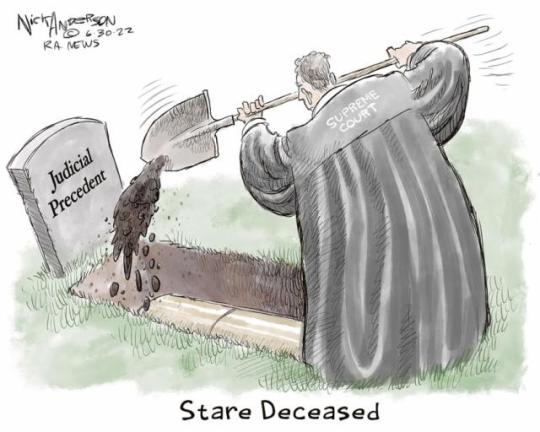#chief justice
Text

Neuvillette wears frilly old nightgowns. no i will not be taking criticism
#genshin#neuvillette#chief justice#fontaine#genshin fontaine#babygrl#god i love him sm#i cannot wait till his banner!!!!
489 notes
·
View notes
Text

Neuvillette isn't used to anyone worshipping the Iudex instead of justice itself.
#why are they so pretty???#wriolette#wriothesley#neuvillette#iudex#chief justice#art#fanart#neuvithesley#rizzley#genshin#genshin neuvillette#genshin wriothesley
137 notes
·
View notes
Text

Drew the Chief Justice of Fontaine! :)
#illust#illustration#アニメ#イラスト#anime#art#fanart#genshin#genshin impact#原神#neuvillette#neuvillette genshin#fontaine#neuvillette fanart#neuvi#chief justice#iudex#genshin fontaine
110 notes
·
View notes
Text

pocket bosses
#my art#toontag#toontown#vice president of sales#chief financial officer#chief justice#chief executive officer#cog bosses
215 notes
·
View notes
Text
IMAGINE NEUVILLETTE X READER WITH ALL I ASK OF YOU FROM PHANTOM OF THE OPERA
|| ONE SHOT || NEUVILLETTE X G/N READER ||
-------------------------------------------------------
"Say you'll share with me one love~ one lifetime." You held his cheek lightly as neuvillette realeased waves of pent-up emotions onto you.
"Share each day with me- each night~ each morning" you ran a hand through his hair as a way to ground him back to reality. A showing that you weren't going to leave him. You're poor weeping dragon
"...Love me..." he speaks back. He places a hand on your hand, holding onto his cheek.
"You know~... I do~" you look up into the eyes of the previously cold chief Justice.
"Anywhere you go, let me go too." You look into each others eyes and see nothing but love. You wipe away some of his tears and subconsciously inch your lips closer to his~
"Love me~...
...that's all I ask... of you~" you gently close the gap between your lips and kiss him gently.
-------------------------------------------------------
I literally wrote this in a cold sweat. I had to get this idea written before I lost it. I did not read it over, lol
#neuvillette#genshin impact#genshin x reader#genshin imagines#adorable#phantom of the opera#obsessed#i will write#needed to share#so good#chief justice#neuvilette genshin#neuvilette x reader#neuvilette
73 notes
·
View notes
Text









Monsieur Neuvillette
42 notes
·
View notes
Text

JUSTICE
46 notes
·
View notes
Text


TTCC Comic panel redraw I did a while back
#toontown#toontown corporate clash#toontown cogs#bossbot ceo#cashbot cfo#chief executive officer#chief financial officer#cfo#ceo#lawbot cj#cj#chief justice#my art
83 notes
·
View notes
Text


Finally announcing this today. Not only will this be my cosplay for @tfnationltd , but I will also be one of the judges of the cosplay contest. (Could I have picked a more fitting cosplay??)
So yeah. We're doing biblically accurate Chief Justice Tyrest ;)
Pics taken by fabulous "Die_photoWG" on insta!
36 notes
·
View notes
Text

Chief Justice from Toontown Corporate Clash - Aluminum Foil Sculpture
#toontown#toontown corporate clash#video game#video game fanart#video games#chief justice#judge#foil#sculpture#fanart
23 notes
·
View notes
Text

I am obsessed with him 🦭✨
#illustration#digital art#fanart#clip studio paint#genshin impact fan art#genshin impact#neuvilette fanart#neuvillette#genshin neuvillette#chief justice#fontaine
27 notes
·
View notes
Text

day twenty four; sleepies...
#the concept for this was cute the exucution less cute i dont like this but eh#genshin impact#neuvillette#neuvillette fanart#genshin impact fanart#neuvilette#fontaine#genshin#chief justice of fontaine#chief justice#iudex#mod neuvillette
34 notes
·
View notes
Note
Has any president ever not been given the oath of office by the chief justice of the supreme court
Yes. The Constitution does not specify who must administer the oath of office to the President and government officials who are required to swear (or affirm) an oath can essentially be sworn in by any federal or state judge or even a notary public.
The oath of office has been administered eight times by someone other than the Chief Justice of the United States -- usually when a Vice President has assumed office upon a President's death and it was necessary to quickly locate somebody who could administer the oath. George Washington was also sworn in by someone other than the Chief Justice at both of his inaugurations. In fact, not only was there no Chief Justice at the time of Washington's first inauguration but there was literally no federal judiciary (and, obviously, no federal judges). The Judiciary Act establishing the Supreme Court wasn't enacted until September 1789 -- almost five months into President Washington's first term -- and that's when the first members of the Supreme Court were nominated and confirmed.
Of course, the Chief Justice of the United States has been the person swearing in the President the vast majority of the time. John Marshall, the longest-serving Chief Justice in American history (1801-1835), administered the oath of office more times than anyone else -- nine times to five different Presidents. However, Chief Justice Roger B. Taney (served from 1836-1864) administered the oath to more individual Presidents than anyone else -- seven times to seven different Presidents. The nation's first two Chief Justices -- John Jay (1789-1795) and John Rutledge (August-December 1795) -- are the only two Chiefs who never administered the oath to a President.
Here is the list of Presidential Inaugurations not conducted by the Chief Justice of the United States along with the person who administered the oath of office:
•GEORGE WASHINGTON's 1st Inauguration (April 30, 1789):
Robert Livingston, Chancellor of New York (The Chancellor of New York was the presiding judge of the New York Court of Chancery, the highest court in New York State from 1701-1847)
•GEORGE WASHINGTON's 2nd Inauguration (March 4, 1793):
William Cushing, Associate Justice of the U.S. Supreme Court
•JOHN TYLER's Inauguration (April 4, 1841):
William Cranch, Chief Judge of the U.S. Circuit Court of the District of Columbia (Tyler assumed office upon the death of President William Henry Harrison. Interestingly, Cranch was the nephew of John and Abigail Adams.)
•MILLARD FILLMORE's Inauguration (July 9, 1850):
William Cranch, Chief Judge of the U.S. Circuit Court of the District of Columbia (Fillmore assumed office upon the death of President Taylor.)
•CHESTER A. ARTHUR's Inauguration (September 20, 1881):
John R. Brady, Justice of the New York State Supreme Court (Arthur assumed office upon the death of President Garfield. Brady was the first judge that could be tracked down to administer the oath at Arthur's home in New York City after notification of Garfield's death arrived shortly after midnight on Sept. 20, 1881. After returning to Washington, D.C. on September 22, 1881, Arthur was administered the oath of office again in a formal ceremony by Chief Justice Morrison Waite.)
•THEODORE ROOSEVELT's 1st Inauguration (September 14, 1901):
John R. Hazel, Judge of the U.S. District Court for the Western District of New York (Roosevelt assumed office upon the death of President McKinley.)
•CALVIN COOLIDGE's 1st Inauguration (August 3, 1923):
John Calvin Coolidge Sr., Justice of the Peace and Notary Public in Plymouth, Vermont (Coolidge assumed office upon the death of President Harding. Coolidge was staying at his father's home in Vermont when he was notified shortly after midnight on August 3, 1923 that President Harding had died a few hours earlier in San Francisco. Since Coolidge's father was a Notary Public, he administered the oath of office to his son in the sitting room of the family home. After being sworn in by his father, President Coolidge promptly went back to sleep.)
•LYNDON B. JOHNSON's 1st Inauguration (November 22, 1963):
Sarah T. Hughes, Judge of the U.S. District Court for the Northern District of Texas (Johnson assumed office upon the death of President Kennedy. Johnson was in Dallas with Kennedy when the President was assassinated, and he was sworn in as President aboard Air Force One on the airport tarmac of Love Field before leaving Texas to return to Washington with Kennedy's body.)
#History#Presidents#Presidential Oath of Office#Oath of Office#Presidential Inaugurations#Inaugurations#Swearing-in the President#Presidential Oath#Politics#Chief Justice of the United States#Supreme Court#Chief Justice#Constitution#POTUS#Presidents and Chief Justices#Judiciary#SCOTUS
25 notes
·
View notes
Text

these horrible robots occupy my brain 20% of the time
#my art#toontown#toontag#vice president of sales#chief financial officer#chief justice#chief executive officer#cog bosses
217 notes
·
View notes
Text

The Supreme Court creates train wreck over Texas immigration law.
Over the last forty-eight hours, the Supreme Court has made a monumental mess of its review of a Texas law that seeks to assume control over the US border. If the consequences weren’t tragic, it would be comical.
The Texas law is plainly unconstitutional. It is not even a close question. But the Supreme Court created a situation in which enforcement of that law was stayed and then permitted to go back into effect multiple times in a forty-eighth hour period. It was like the Keystone Cops—all because the Supreme Court does not have the fortitude to control the rogue judges on the Fifth Circuit Court of Appeals.
Here's the bottom line: As of late Tuesday evening, the Texas law cannot be enforced pending further order of the Fifth Circuit. See NBC News, Appeals court blocks Texas immigration law shortly after Supreme Court action. As explained by NBC,
A three-judge panel of the New Orleans-based 5th U.S. Circuit Court of Appeals split 2-1 in saying in a brief order that the measure, known as SB4, should be blocked. The same court is hearing arguments Wednesday morning on the issue.
The appeals court appeared to be taking the hint from the Supreme Court, which in rejecting an emergency application filed by the Biden administration put the onus on the appeals court to act quickly.
I review the complicated procedural background below with a warning that it may change in the next five minutes. For additional detail, I recommend Ian Millhiser’s explainer in Vox, The Supreme Court’s confusing new border decision, explained.
Let’s start here: The federal government has exclusive authority to control international borders. The Constitution says so, and courts have ruled so for more than 150 years.
There are good reasons for the federal government to control international borders. If individual states impose contradictory regulations on international borders that abut the states, the federal government could not promulgate a single, coherent foreign policy—which is plainly the job of the federal government.
Texas passed a law that granted itself the right to police the southern border and enforce immigration laws, including permitting the arrest and deportation of immigrants in the US who do not have the legal authority to remain in the country.
Mexico immediately notified Texas that it would not accept any immigrants deported by Texas. (Mexico does accept immigrants deported by the US per international agreements.)
A federal district judge in Texas enjoined the enforcement of state law, ruling that it usurped the federal government's constitutional role. Texas appealed.
When a matter is appealed, the court of appeals generally attempts to “maintain the status quo” as it existed between the parties prior to the contested action. Here, maintaining the status quo meant not enforcing the Texas law that allowed Texas to strip the federal government of its constitutional authority over the border.
However, the Fifth Circuit used a bad-faith procedural ploy to suspend the district court’s injunction, thereby allowing Texas law to go into effect. In doing so, the Fifth Circuit did not “maintain the status quo” but instead permitted a radical restructuring of state-federal relations in a way that violated the Constitution and century-and-a-half of judicial precedent.
In a world where the rule of law prevails, the Supreme Court should have slapped down the Fifth Circuit's bad-faith gambit. It did not. Instead, the Supreme Court allowed the Fifth Circuit's bad-faith ploy to remain in effect—but warned the Fifth Circuit that the Supreme Court might, in the future, force the Fifth Circuit to stop playing games with the Constitution.
The debacle is an embarrassment to the Supreme Court and the Fifth Circuit. The reason the Fifth Circuit acts like a lawless tribunal is because the Supreme Court has allowed the Fifth Circuit to engage in outrageous, extra-constitutional rulings without so much as a peep of protest from the reactionary majority on the Court.
John Roberts is “the Chief Justice of the United States.” He should start acting like it by reprimanding rogue judges in the Fifth Circuit by name—and referring them to the Judicial Conference for discipline. Until Roberts does that, the Fifth Circuit will do whatever it wants.
[Robert B. Hubbell Newsletter]
#robert b. hubbell#Robert B. Hubbell Newsletter#corrupt SCOTUS#Fifth Circuit#Chief Justice#legal precedent#Nick Anderson#immigration#Texas
6 notes
·
View notes